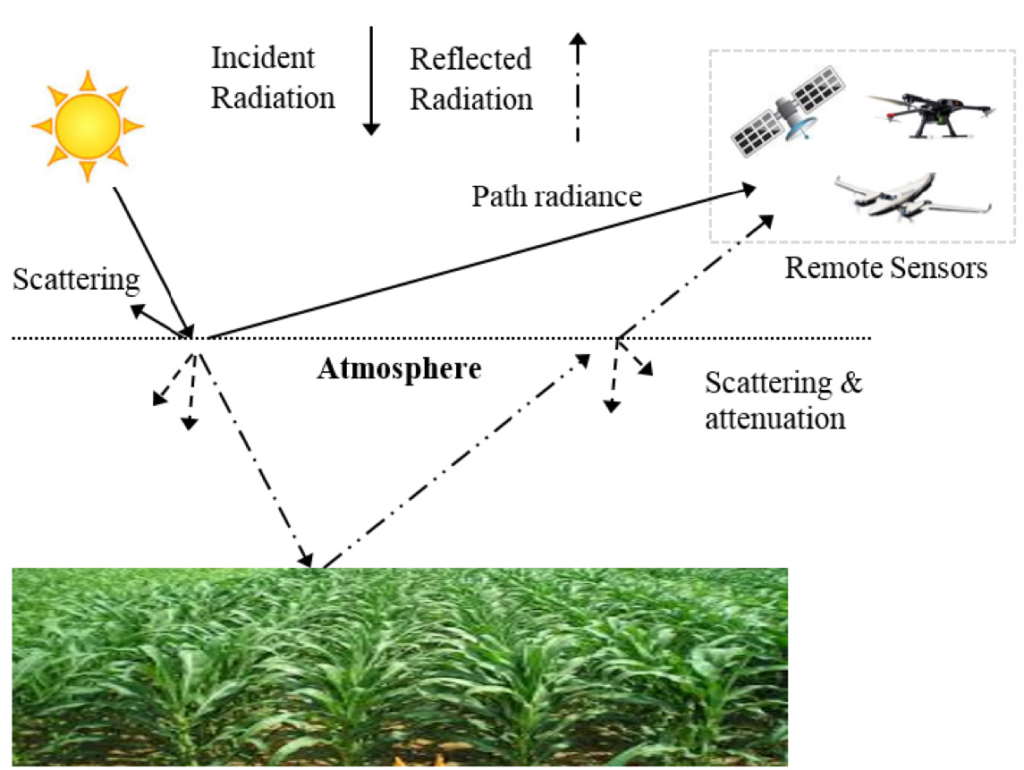Biotechnology: Precision Agriculture
Biotechnology is a quickly advancing field. For those that are unaware, Biotechnology is the combination of technology in the study of biology. This technology is helping so many different fields, especially medicine. However, one that is commonly overlooked is how technology has changed agriculture. I am not talking about tractors, advancements in fertilizers, or bioengineered seeds. No. I am talking about precision agriculture. A technique that the International Society of Precision Agriculture defines it as, “Precision Agriculture is a management strategy that gathers, processes and analyzes temporal, spatial and individual data and combines it with other information to support management decisions according to estimated variability for improved resource use efficiency, productivity, quality, profitability and sustainability of agricultural production” (ISPA). It uses mass quantities of data collected via drones, sensors, overall crop output, and whatever else they can find that would help the farmers understand just exactly their crops are being affected by irrigation, weather, planting patterns, pests, or anything else that might change the efficiency of growth for their outputs. We are going to take a deeper dive into what the technology is now.

The main piece of technology that precision agriculture uses is Global Position System (GPS) and Global Navigation System (GNSS). These two paired together or used individually, allow farmers to watch their fields and find any irregularities that may be emerging. They can catch problems before they become severe issues and cannot be corrected. It allows farmers to reutilize their resources in a more efficient way to stop those problems. Those problems typically consist of irrigation, overcrowding of crops, lack of or too much sunlight, and various other factors. These images allow farmers to view their land quickly without having to leave their office and make informed decisions using ariel views. Currently, only around 15% of the US has adopted precision agriculture, meaning this is a quickly emerging field and a huge market is available that has yet to be scratched behind a $1.264 trillion dollar industry in the US alone.
There are other technologies utilized. As I mentioned earlier, sensors are another technology utilized. One specific kind is called Remote Sensing (RS). RS uses spectroscopy, a type of study to determine chemical makeups, to see small changes in planted crops, and to understand the “biophysical and biochemical properties” of these crops. Furthermore, there is technology that allows farmers to see changes in the nutrients of the soil, or the amount of sunlight hitting certain portions of the land. The list could go on and on of all of the technology that is being put into agriculture. These changes are not only making our food quality higher but making it more accessible by lowering costs and increasing the quantity supplied as the world population just crossed over 8 billion people.
AI in Precision Agriculture
Another aspect of precision agriculture that has not yet really caught up is the use of AI and machine learning (ML) in the field. AI can be taught to do many things that could greatly reduce tedious and time-consuming tasks for many farmers. For example, AI could view GPS images and be able to pinpoint any damage to crops or fallen trees. Another use might be using AI to pinpoint exactly where weeds are. Instead of spraying the entire row, only that weed specifically would be sprayed to be neutralized. There is also a huge opportunity for catching disease spreading through crops early. AI systems have begun training to catch various types that can stunt or destroy the growth of crops. There are so many more applications of this technology, from pest detection to irrigation, this is a field within precision agriculture that should be considered as another up-and-coming field to that AI can quickly be applied.
This may feel like a random topic, but this is the industry I was passionate to enter for many years. When I first came to the University, I started in agriculture, before switching to a minor, to finally coming over to MIS. So, many, if not the majority, of my credits here are in agriculture. I have a passion for the subject and this market is massive. I think the combination of my MIS degree with my passion is the perfect bridge to get me into the career field that has always been my dream. However, I would also encourage anyone else who is looking to start a company or get into a new field of business to consider precision agriculture as an option. It will explode within the coming years, and it would be a great place to make a successful living.
Precision Agriculture is an up-and-coming field. Ripe with protentional and a part of a very lucrative market waiting for someone to make the most of it. The technologies are impressive and will also provide a lot of good for our world providing citizens with better food, and a larger quantity for the quickly developing world to use. Thanks for reading this blog post.

